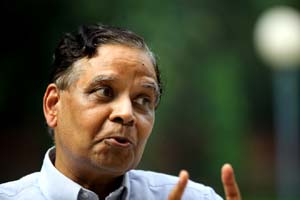In a step towards realisation of India’s bullet train dreams, NITI Aayog vice-chairman Arvind Panagariya and several other top bureaucrats will be going to Japan this month to hold the first overseas meeting of the high-level joint committee empowered by the Cabinet to see through the flagship project.
Panagariya, along with the Foreign Secretary, Railway Board Chairman and Secretaries of Department of Economic Affairs, Department of Industrial Policy and Promotion are scheduled to meet in Tokyo on May 16 to discuss the appointment of a general consultant for the project. The general consultant oversees the project design and other such matters. The Indian side is keen on pressing with Japan that the appointment of the consultant be kept outside the purview of the loan agreement.
The next day, around 100 companies, representing industry giants in Japan’s rail and technology sectors, are scheduled to interact with their Indian counterparts, who will work with the Japanese in the project.
Special Advisor to Japanese PM Hiroto Izumi is to represent his government at the meetings.
The outline of this exercise was drawn up at Rail Bhawan Wednesday, in a meeting chaired by NITI Aayog member V K Saraswat. Representatives from around 40 Indian companies — including Tatas, Reliance, Larsen and Toubro among others — attended the meeting. “Indian and Japanese companies must get a common platform to network and exchange notes before the whole process begins. This exercise is aimed at ensuring that,” said a senior official.
The Sinkansen, though constructed in the 1960s, has evolved in terms of technology over the decades. India will be getting the latest version of the technology for its Ahmedabad-Mumbai corridor.
It was a Panagariya-led panel that cleared the project for Cabinet approval. The government has floated National High Speed Rail Corporation with a paid up capital of Rs 200 crore to implement the project.

